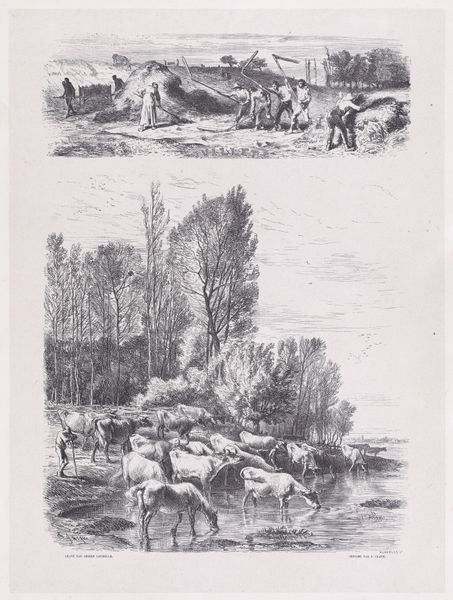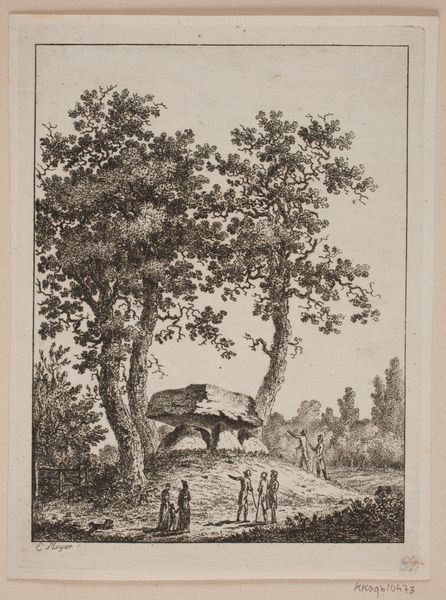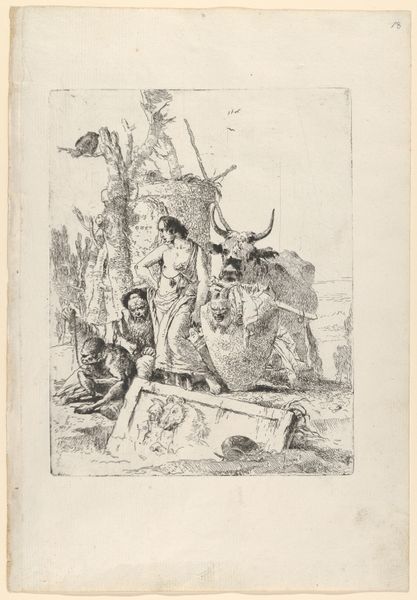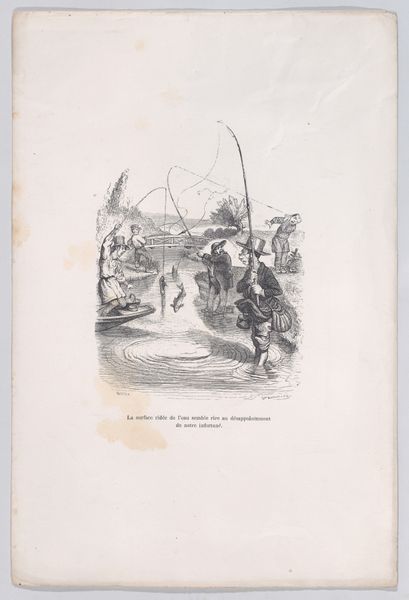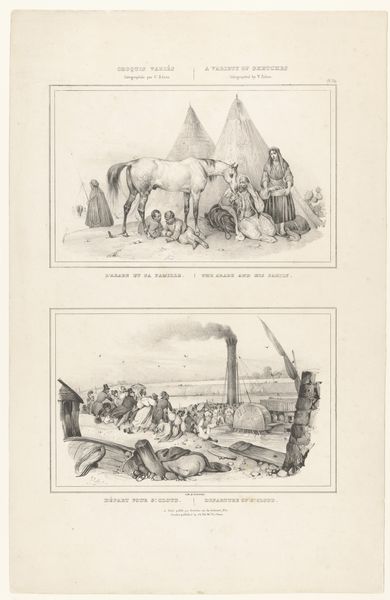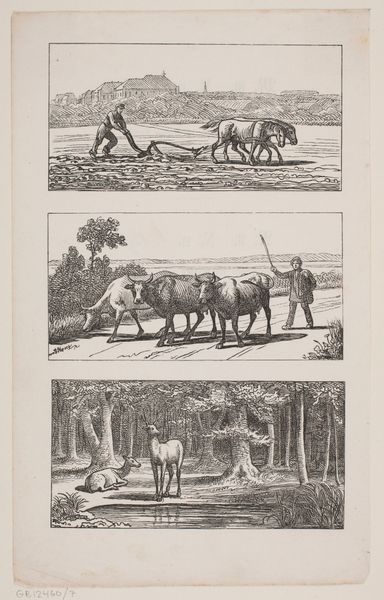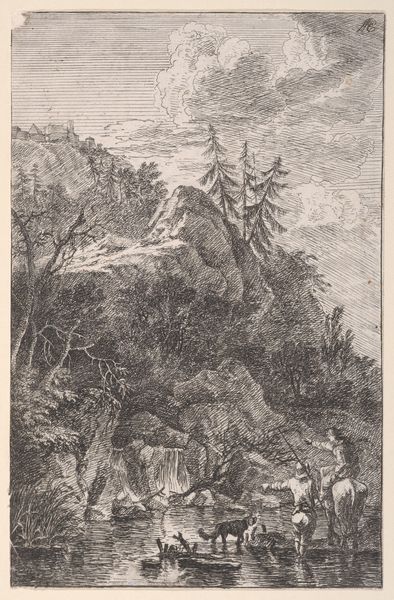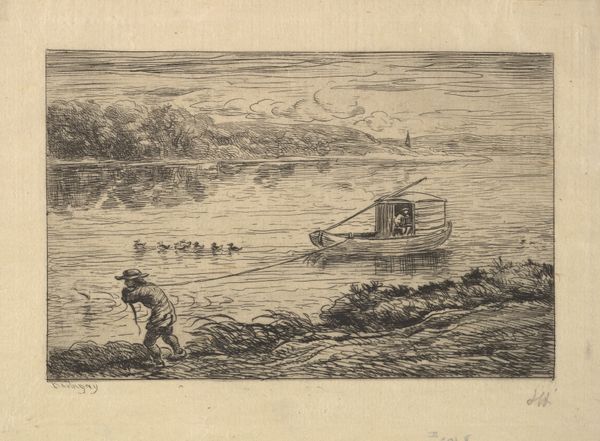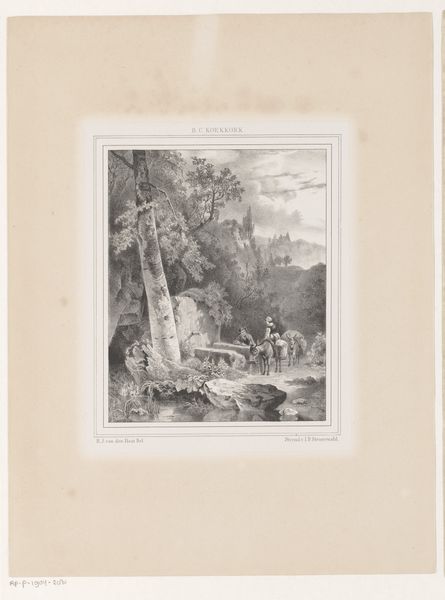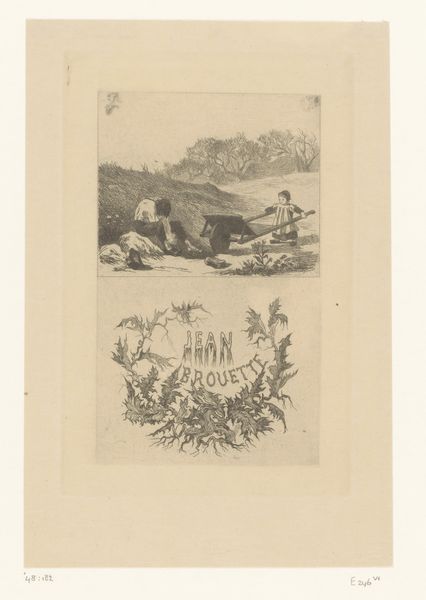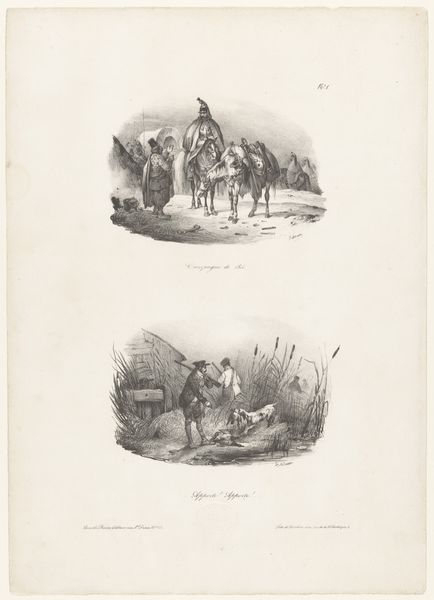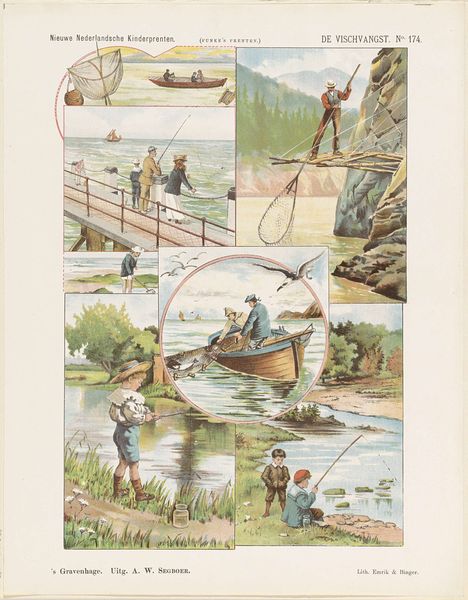
Dimensions: Sheet: 11 11/16 × 7 7/16 in. (29.7 × 18.9 cm) Image: 6 5/8 × 5 15/16 in. (16.8 × 15.1 cm)
Copyright: Public Domain
Curator: "Le Verveux; from Magasin Pittoresque" is the work, an engraving by Charles Jacque, created sometime between 1848 and 1864. Editor: The scene has a tranquil, almost melancholy air. The dark, dense foliage is so closely intertwined it appears impenetrable, framing a seemingly still body of water. The mood strikes me as somewhat melancholic, almost brooding. Curator: It's a Romantic depiction tinged with Realism, reflective of Jacque's broader artistic approach. The image portrays a fishing scene, with two figures in a small boat on a river or stream. It originally appeared in "Magasin Pittoresque", which sought to popularize knowledge and culture through accessible imagery. Editor: Right, the ‘picturesque’ aspect— the workers in the boat seem like a part of the idyllic natural environment but are engaging with nature’s exploitation at the same time. The detail in the trees is striking, and even the way the figures are rendered gives them this weightiness, as if to highlight humans are part of the scenery. Curator: Absolutely. It's important to remember the social context. Genre paintings like this were popular among the rising middle class. They depicted scenes of everyday life, offering a glimpse into rural existence. But they also played a role in constructing idealized versions of the French countryside, subtly reinforcing ideas about national identity. Editor: And by focusing on labor, images like this obscure its exploitative dimensions by centering labor within pleasant, accessible aesthetics. The figures become archetypes stripped of social identities, which further pushes an abstract sense of harmony onto a lived reality defined by deep inequality. Curator: Exactly, Jacque and others took great inspiration from the Dutch Golden Age masters who explored similar themes. He clearly wants us to appreciate the workers but, at the same time, there's no critique or analysis of those power structures in play. Instead, the labor is subsumed by an admiration for the "picturesque," to your point. Editor: Considering Jacque’s association with the Barbizon school—he lived in Barbizon starting around 1849-- it might also speak to the group's political position towards agrarian societies, in alignment with peasant populations increasingly coming into modernity. Curator: That said, I would have liked to see some more nuanced social and historical contexts included here at the Met around this fascinating piece. Editor: Perhaps more information, but it's a stunning piece that provokes deep thought about human interaction with the natural world.
Comments
No comments
Be the first to comment and join the conversation on the ultimate creative platform.
